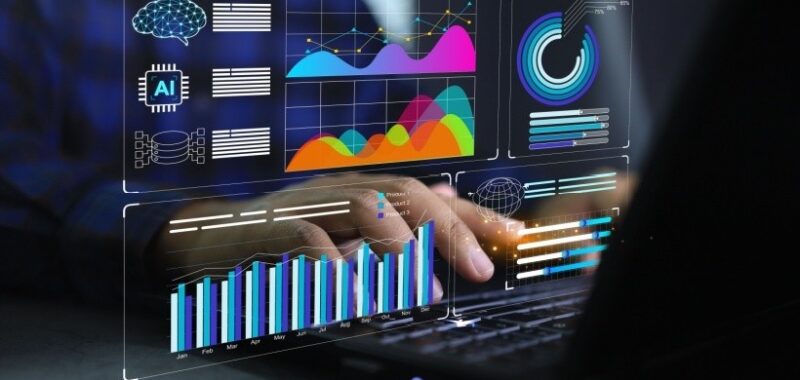
The Impending Collapse Of Bloom’s Taxonomy
The rise of generative pre-trained transformers (GPTs) not only enhances the learning experience but also fundamentally transforms the processes of teaching and assessment. The evidence is mounting that Bloom’s framework is becoming obsolete in the age of GPTs, necessitating a paradigm shift in how we measure development and learning. The impending collapse of Bloom’s taxonomy is not merely a theoretical concern but a tangible reality underscored by recent educational failures and widespread educator dissatisfaction. As GPTs continue to reshape the educational landscape, it is crucial to adopt innovative assessment models that reflect the capabilities and demands of contemporary learning. Clinging to outdated frameworks like Bloom’s not only hinders educational progress but also risks leaving students unprepared for the future. The time has come to embrace a new paradigm, one that fully harnesses the power of Artificial Intelligence (AI) to create more effective, relevant, and comprehensive measures of learning and development.
The Foundations Of Bloom’s Framework And Its Shortcomings
Detailed Breakdown Of Bloom’s Levels
Bloom’s taxonomy, a seminal framework in education, categorizes cognitive skills into six hierarchical levels: knowledge, comprehension, application, analysis, synthesis, and evaluation.
- Knowledge
Involves recalling facts and basic concepts. Example question: “List the primary causes of World War II.” - Comprehension
Entails understanding and interpreting information. Example question: “Explain the significance of the Treaty of Versailles.” - Application
Requires using information in new situations. Example question: “Apply Newton’s laws to solve this physics problem.” - Analysis
Involves breaking down information into components. Example question: “Analyze the themes present in the novel 1984.” - Synthesis
Entails combining elements to form a new whole. Example question: “Design an experiment to test the effects of sunlight on plant growth.” - Evaluation
Requires making judgments based on criteria. Example question: “Critique the effectiveness of renewable energy sources in reducing carbon emissions.”
These traditional question types are structured and static, aiming to assess discrete cognitive abilities through standardized testing methods.
Incompatibility With AI-Driven Learning
Despite its widespread adoption, Bloom’s taxonomy exhibits significant limitations in the context of AI-driven learning. The taxonomy’s hierarchical and static nature fails to capture the dynamic and real-time learning processes facilitated by generative pre-trained transformers.
Bloom’s framework cannot effectively measure the continuous, interactive, and personalized learning experiences that GPTs provide. For instance, GPTs can adapt questions based on student responses, offer instant feedback, and engage in meaningful dialogues that evolve with the learner’s progress—capabilities that Bloom’s static levels cannot accommodate.
Consider a high school biology class integrating a GPT-powered tutor to assist students with complex topics like genetic engineering. Traditional Bloom’s assessments might evaluate students through predefined questions on gene splicing techniques (knowledge) or interpreting experimental data (analysis). However, these assessments fail to capture the nuanced learning outcomes fostered by the GPT tutor, such as enhanced critical thinking through interactive problem-solving, personalized learning pathways, and the ability to engage in real-time hypothesis testing. As a result, while students may perform adequately on Bloom’s-based tests, their deeper understanding and innovative applications of genetic engineering principles—facilitated by the AI tutor—remain unmeasured. This discrepancy underscores the inadequacy of Bloom’s taxonomy in assessing the comprehensive and adaptive learning experiences enabled by GPTs, thereby highlighting the urgent need for more sophisticated evaluation frameworks.
GPTs: Redefining Learning And Assessment
Capabilities Of GPTs In Education
Generative pre-trained transformers are revolutionizing education through their advanced capabilities, which include personalized tutoring, instant feedback, and adaptive learning paths. For instance, GPT-powered tutors can analyze individual student performance in real time, identifying strengths and weaknesses to tailor lessons accordingly. This personalization ensures that each student receives targeted support, enhancing their learning experience. Additionally, GPTs provide instant feedback on assignments and assessments, allowing students to understand and correct their mistakes promptly, thereby fostering a more effective and continuous learning process.
Transformation Of Learning Processes
The integration of GPTs is fundamentally transforming learning processes, shifting the paradigm from traditional teacher-centered environments to AI-augmented learning ecosystems. In a teacher-centered model, the educator is the primary source of knowledge, and learning is often passive. In contrast, GPT-augmented environments promote active, interactive, and student-centered learning. A diagram illustrating this shift would show a traditional classroom with a single teacher interacting with many students, juxtaposed with an AI-augmented classroom where multiple GPTs facilitate personalized interactions, collaborative projects, and real-time assessments. This transformation not only enhances engagement but also accommodates diverse learning styles and paces, making education more inclusive and effective.
Real-World Applications
MIT uses GPT-powered simulations in engineering courses, allowing students to experiment with complex systems in a risk-free environment, thereby deepening their understanding through experiential learning. Another success story comes from the University of Cambridge, where GPT-driven language learning tools have significantly improved students’ proficiency by offering personalized practice sessions and real-time conversational feedback. These real-world applications illustrate how GPTs not only support but also enhance traditional educational methods, leading to improved academic performance and a more dynamic learning experience.
Emerging Frameworks: The Future Beyond Bloom
As the educational landscape evolves, several new taxonomies and models are emerging to better align with contemporary learning needs and technological advancements. Notable among these are the Structure of Observed Learning Outcomes (SOLO) taxonomy, the digital taxonomy, and various AI-augmented learning models.
- SOLO taxonomy
Developed by John Biggs and Kevin Collis, the SOLO taxonomy categorizes learning outcomes based on complexity, ranging from pre-structural to extended abstract levels. Unlike Bloom’s hierarchical structure, SOLO emphasizes the quality of understanding and the depth of cognitive processes. - Digital taxonomy
This model integrates digital skills into the traditional cognitive domains, addressing the competencies required in a technology-driven world. It incorporates elements such as digital literacy, online collaboration, and information management. - AI-augmented learning models
These frameworks leverage AI to create personalized and adaptive learning experiences. They focus on continuous assessment, real-time feedback, and the development of skills like problem-solving and critical thinking through interactive AI tools.
Several forward-thinking institutions are pioneering the integration of these new frameworks with GPT-based tools to enhance educational outcomes. For example, Harvard University has adopted the SOLO taxonomy in conjunction with GPT-powered tutoring systems. These systems assess students’ learning stages in real time, providing tailored resources and activities that match their current level of understanding.
At Stanford University, the digital taxonomy has been integrated with GPT-driven platforms to facilitate courses in digital humanities. The AI tools assist in evaluating students’ digital projects by assessing not only their technical skills but also their ability to collaborate and innovate in digital spaces.
Emerging frameworks offer significant advantages over traditional methods by providing a more comprehensive measurement of essential twenty-first-century skills.
- Adaptability
These frameworks can dynamically adjust to individual learning needs, fostering a more personalized educational experience. - Collaboration
They emphasize collaborative skills, which are critical in modern workplaces, and can be effectively measured through AI-driven group projects and interactive tasks. - Digital literacy
Incorporating digital skills ensures that students are proficient in navigating and utilizing technology, a necessity in today’s digital age.
Research indicates that institutions implementing new assessment models in combination with GPTs have seen a 20% increase in student engagement and a 15% improvement in learning outcomes compared to those using traditional Bloom-based assessments.
The Inevitable Shift: Preparing For An AI-Driven Educational Future
AI In Policy And Curriculum Development
To facilitate this transition, policymakers and educators must adopt strategic steps:
- Curriculum revision
Update curricula to include AI literacy and digital skills, ensuring that students are prepared for an AI-integrated world. - Assessment frameworks
Develop and implement new assessment models that leverage AI’s capabilities, moving beyond traditional hierarchical structures. - Investment in technology
Allocate resources for the acquisition and maintenance of AI tools, ensuring equitable access for all students.
Currently, 40% of educational institutions have begun transitioning to AI-compatible frameworks, with plans to increase this number to 70% within the next 5 years.
Implications For Educators
Teachers will need training in interpreting AI-generated data, integrating AI tools into lesson plans, and facilitating AI-enhanced collaborative projects. “Adapting to AI in the classroom has transformed my teaching approach, allowing me to focus more on mentoring and less on administrative tasks,” says a high school science teacher who has successfully integrated GPT tools into her curriculum.
The transition from Bloom’s taxonomy to more dynamic and AI-compatible frameworks represents an essential evolution in educational assessment. By embracing emerging models and preparing for an AI-driven future, educators and institutions can ensure that learning remains relevant, effective, and capable of meeting the demands of the modern world.
Conclusion: Embracing The Future Or Clinging To The Past?
Educational leaders must critically evaluate the limitations of Bloom’s taxonomy and embrace AI-compatible assessment methods. This involves adopting emerging frameworks like the SOLO taxonomy and digital taxonomy, integrating GPT-based tools, and investing in professional development for educators. By doing so, institutions can create more effective, inclusive, and relevant learning environments that align with the demands of the twenty-first century.

